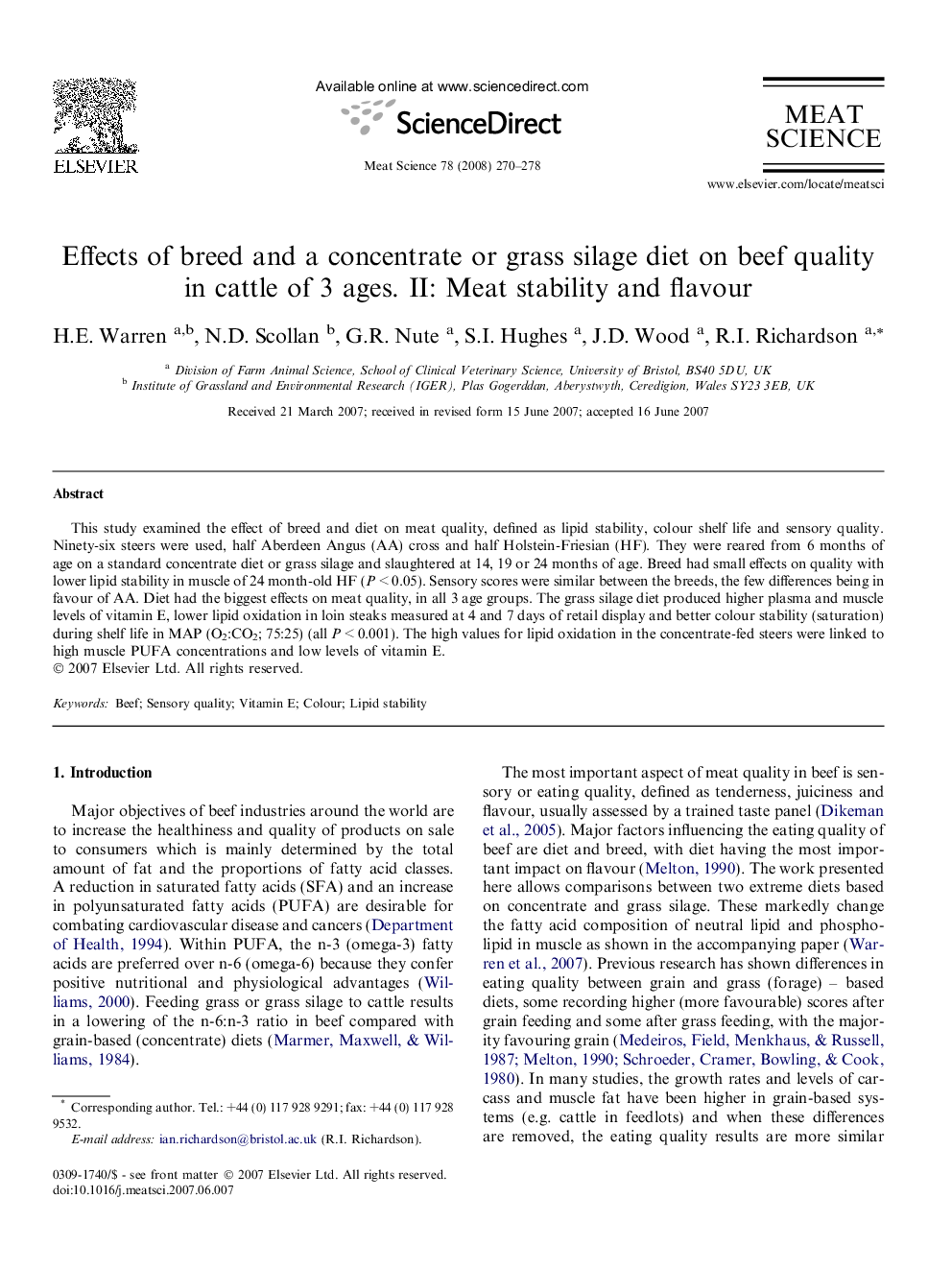| کد مقاله | کد نشریه | سال انتشار | مقاله انگلیسی | نسخه تمام متن |
|---|---|---|---|---|
| 2451730 | 1109692 | 2008 | 9 صفحه PDF | دانلود رایگان |

This study examined the effect of breed and diet on meat quality, defined as lipid stability, colour shelf life and sensory quality. Ninety-six steers were used, half Aberdeen Angus (AA) cross and half Holstein-Friesian (HF). They were reared from 6 months of age on a standard concentrate diet or grass silage and slaughtered at 14, 19 or 24 months of age. Breed had small effects on quality with lower lipid stability in muscle of 24 month-old HF (P < 0.05). Sensory scores were similar between the breeds, the few differences being in favour of AA. Diet had the biggest effects on meat quality, in all 3 age groups. The grass silage diet produced higher plasma and muscle levels of vitamin E, lower lipid oxidation in loin steaks measured at 4 and 7 days of retail display and better colour stability (saturation) during shelf life in MAP (O2:CO2; 75:25) (all P < 0.001). The high values for lipid oxidation in the concentrate-fed steers were linked to high muscle PUFA concentrations and low levels of vitamin E.
Journal: Meat Science - Volume 78, Issue 3, March 2008, Pages 270–278